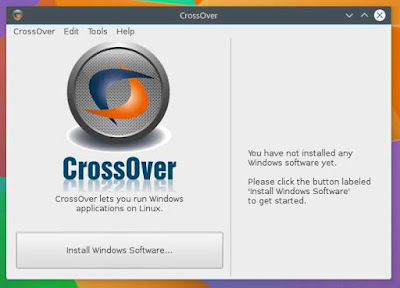Oculus announced today that they will be dropping support for their Virtual Reality Oculus Rift platform on Mac and Linux due to the need to focus solely on the Windows platform for the foreseeable future. Here is the post from the Oculus site giving hardware specifications and the demise of Mac and Linux support.
Given the challenges around VR graphics performance, the Rift
will have a recommended specification to ensure that developers can
optimize for a known hardware configuration, which ensures a better
player experience of comfortable sustained presence. The recommended PC
specification is an NVIDIA GTX 970 or AMD 290, Intel i5-4590, and 8GB
RAM. This configuration will be held for the lifetime of the Rift and
should drop in price over time.
The Rift is specifically designed to deliver comfortable, sustained
presence – a “conversion on contact” experience that can instantly
transform the way people think about virtual reality. As a VR device,
the Rift will be capable of delivering comfortable presence for nearly
everyone. However, this requires the entire system working well.
Today, that system’s specification is largely driven by the requirements of VR graphics. To start with, VR lets you
see
graphics like never before. Good stereo VR with positional tracking
directly drives your perceptual system in a way that a flat monitor
can’t. As a consequence, rendering techniques and quality matter more
than ever before, as things that are imperceivable on a traditional
monitor suddenly make all the difference when experienced in VR.
Therefore, VR increases the value of GPU performance.
At the same time, there are three key VR graphics challenges to note: raw rendering costs, real-time performance, and latency.
On the raw rendering costs: a traditional 1080p game at 60Hz requires
124 million shaded pixels per second. In contrast, the Rift runs at
2160×1200 at 90Hz split over dual displays, consuming 233 million pixels
per second. At the default eye-target scale, the Rift’s rendering
requirements go much higher: around 400 million shaded pixels per
second. This means that by raw rendering costs alone, a VR game will
require approximately 3x the GPU power of 1080p rendering.
Traditionally, PC 3D graphics has had soft real-time requirements,
where maintaining 30-60 FPS has been adequate. VR turns graphics into
more of a hard real-time problem, as each missed frame is visible.
Continuously missing framerate is a jarring, uncomfortable experience.
As a result, GPU headroom becomes critical in absorbing unexpected
system or content performance potholes.
Finally, we know that minimizing motion-to-photon latency is key to a
great VR experience. However, the last few decades of GPU advancements
have been built around systems with deep pipelining to achieve maximum
throughput at the cost of increased latency; not exactly what we want
for VR. Today, minimizing latency comes at the cost of some GPU
performance.
Taking all of this into account, our recommended hardware
specification is designed to help developers tackle these challenges and
ship great content to all Rift users. This is the hardware that we
recommend for the full Rift experience:
- NVIDIA GTX 970 / AMD 290 equivalent or greater
- Intel i5-4590 equivalent or greater
- 8GB+ RAM
The goal is for all Rift games and applications to deliver a great
experience on this configuration by default. We believe this “it just
works” experience will be fundamental to VR’s success, given that an
underperforming system will fail to deliver comfortable presence.
The recommended spec will stay constant over the lifetime of the
Rift. As the equivalent-performance hardware becomes less expensive,
more users will have systems capable of the full Rift experience.
Developers, in turn, can rely on Rift users having these modern
machines, allowing them to optimize their game for a known target,
simplifying development.
Apart from the recommended spec, the Rift will require:
- Windows 7 SP1 or newer
- 2x USB 3.0 ports
- HDMI 1.3 video output supporting a 297MHz clock via a direct output architecture
The last bullet point is tricky: many discrete GPU laptops have their
external video output connected to the integrated GPU and drive the
external output via hardware and software mechanisms that can’t support
the Rift. Since this isn’t something that can be determined by reading
the specs of a laptop, we are working on how to identify the right
systems. Note that almost no current laptops have the GPU performance
for the recommended spec, though upcoming mobile GPUs may be able to
support this level of performance.
Our development for OS X and Linux has been paused in order to focus
on delivering a high quality consumer-level VR experience at launch
across hardware, software, and content on Windows. We want to get back
to development for OS X and Linux but we don’t have a timeline.
In the future, successful consumer VR will likely drive changes in
GPUs, OSs, drivers, 3D engines, and apps, ultimately enabling much more
efficient low-latency VR performance. It’s an exciting time for VR
graphics, and I’m looking forward to seeing this evolution.
Last week I posted about CodeWeavers en-pending support for Oculus Rift on Mac and Linux see the original post here. So with this lasted announcement from Oculus it looks as tho CodeWeavers is going to be the only game in town to support Rift VR on Mac and Linux for the foreseeable future.


















